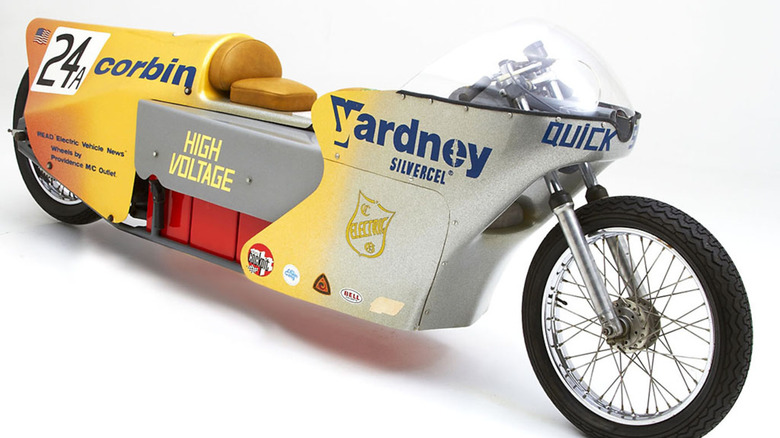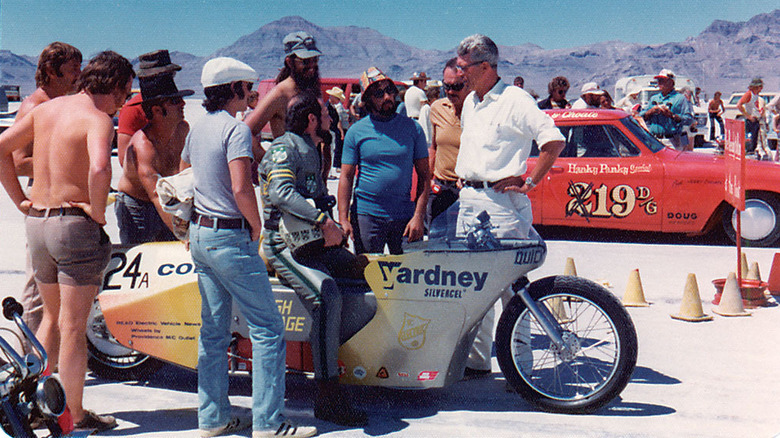The Incredible 1970s Electric Motorcycle Powered By A Fighter Jet Starter
Nowadays, Mike Corbin is best known as a purveyor of custom motorcycle seats in a dizzying array of color combinations, with materials ranging from traditional leathers to exotic hides like alligator and stingray. 50 years ago, Corbin was in an entirely different role — one of setting records for the electric motorcycle industry.
Corbin's journey to developing electric motorcycles was an interesting one. Always interested in anything mechanical, Corbin became an electrician in the U.S. Navy, followed by a stint wiring jet engines for Pratt & Whitney during the Vietnam War. By the late-1960s, support for the war was declining and Corbin reasoned that it might be time to diversify his business interests, leading to the birth of the motorcycle seat-making enterprise.
Between the counterculture movement, and the popularity of motorcycle films such as "Easy Rider," Corbin's eponymous motorcycle accessory business thrived. Nonetheless, the fuel crisis of the 1970s and a sense of wanderlust returned Corbin back to his roots as an electrician, and he began to experiment with electric-powered motorcycles.
A series of small electric scooters and mini-bikes were stepping stones to Corbin's crowning achievement: a racing motorcycle called the "Quicksilver."
$100,000 worth of batteries
Using some of his military contacts, Corbin secured sponsorship from Yardney Electric, a Connecticut company that manufactured batteries for nuclear submarines. The batteries Yardney provided for the Quicksilver were made of a silver-zinc chemistry — five times more powerful than typical lead acid batteries of the time, according to an interview with Corbin. As pricey as they were powerful, the batteries reportedly contained $100,000 worth of silver, which is over $600,000 in today's dollars.
The Quicksilver's propulsion system also had a unique military provenance: a pair of electric starter motors from the Douglas A-4 "Skyhawk" fighter jet that were purchased as Navy surplus. These were the 24-volt electric motors used to bring the airplane's main gas turbine engine to life. Though only two motors were needed to power the Quicksilver, an entire pallet's worth was acquired because they burned up and self-destructed so rapidly during testing.
In August of 1974, Corbin and his team headed out to the famed Bonneville Salt Flats in Utah to test the Quicksilver's mettle. The result was a new electric motorcycle land speed record of 165.387 mph round-trip average. The use of the word "average" is because outside of that parameter, the bike hit 191 mph, followed by 201 mph.
The record set that day remained intact until 2012 — a remarkable 38 years. The Quicksilver is still in Corbin's possession, and is well preserved inside the company's California shop. It's routinely displayed to the public at motorcycle shows, museums, and special events.

